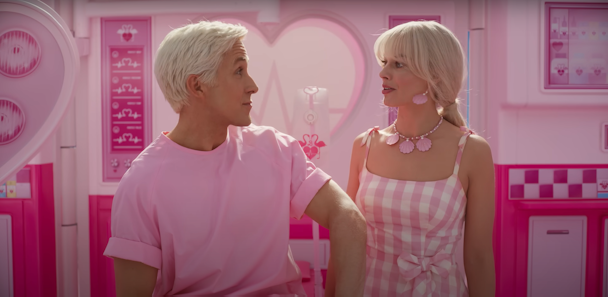Too late to the Barbie party? How to improve your timing for the next phenomenon
Marketers will review whether their tie-in efforts were timely enough as the Barbie juggernaut moves on. Picking your moment isn’t always easy – so we asked a bunch of agency experts how to manage it.

Barbie gave brands an opportunity to join in with culture. But not everyone made it in time / Warner Brothers
Brands have become adept at leveraging cultural, religious and sporting stops on the calendar. Away from Christmas, the World Cup or festival season, the Barbie movie has provided another chance for marketers to worm their way into the public consciousness.
If, that is, they can get their timing right. Barbie elevated some brands while highlighting others’ lack of cultural cachet. Show up too early, and your message may go unheard. Arrive too late to the party, and you risk looking like a bandwagon jumper.
We asked a dozen agency experts for their take. How do you time a brand intervention just right? How do you stop onerous sign-off procedures getting in the way of good fun? What data is worth paying attention to? And can these activations provide the same value as brand-building campaigns?
Advertisement
How do you solve a problem like... picking your moment?
Matt Charlton, chief executive, Brothers & Sisters: “Honestly, I expect that most brands and agencies know when to pick their moment, when the hype is at its highest. The problem actually lies in one of the most ignored currencies in marketing - time. Decisions get delayed by internal budget wrangling, stakeholder management, research, important people being on holiday and more. Which means all the precious time needed for production gets dribbled away, and the production reality becomes; “if we make it any faster then it will look rubbish”, therefore it gets pushed back. So, if we really want control over landing at the right moment, decide early and protect production time above faff.”
Katy Wright, chief executive, FCB London: “There is a great joke my dad taught me as a little girl. I’d ask someone to ask me: ‘What’s my job? And then, ‘What is the hardest part of that job?’ The first answer would be ‘actor’ and before they’d got through the second question I’d shout: ‘Timing!’ In short, timing is everything. Sometimes the simplest things are meant to feel brilliantly reactive but the reality may be very different. Sporting events, for example, we’re pre-preparing the numerous ‘reactive’ outcomes. You have to of course understand your brand, its voice and what it stands for. And finally, trust and autonomy among the team is integral. If it takes a week to sign off, then the moment may have passed. On Barbie, it’s passed.”
Tamara Littleton, chief executive, The Social Element: “It’s always a concern that brands may miss the boat and risk appearing too needy or worse, late to the party. Activating around key cultural events isn’t easy but we know from experience it takes a healthy dose of educated risk-taking. A carefully curated dance of data and daring can often create the best results, blending strategic insights and brand tone of voice with a dash of intuition to create content that resonates best with your target audience. As well as this, being immersed in social communities (like TikTok) daily allows us to monitor trends and ‘read the room.’ Too much consideration leaves little room for change, so it’s important to have space for maneuvering, so you can catch the wave at the right time and aren’t left behind.”
Matt Rhodes, chief strategy officer at House 337: “For a movie release, there’s a pattern to building hype and managing marketing activity. Brands want to be part of the hype curve when people are excited. Nobody wants a brand saying ‘come on Barbie, let’s go party’ when the conversation’s moved on. The reality for brands is that the timing around activations will be part of the agreement with the property they’re marketing. The launch date and plan should be part of the discussions for any partnership to deliver. Marketing after the event will look more opportunistic, and unless the tie-in and the creative execution work well, will fail to engage.”
Advertisement
Tim Ainsworth, media and brand experience strategy director, McCann Manchester: “McCann’s mission is to help brands earn a meaningful role in people’s lives. A critical component of this is to establish how that role is manifested in culture: the art of adopting a consistency that means a brand becomes expected – albeit in distinctive ways – rather than an imposition. Secondly, marketing is about momentum and market availability. Relying on ‘moments’ carries risk. The scale and type of return anticipated from the moments of impact will be determined by the investment required to build to its crescendo – for example, investing in a brand in Q1, will build salience ahead of an event in Q2.”
Richard Clay, head of strategy, Zenith UK: “Picking your moment should be the easy bit. The hard yards come earlier. Brands that consistently do moment marketing effectively have built a clear and consistent understanding of exactly what they stand for and how they want to show up, throughout their organization. That’s no mean feat, but the clarity it provides makes delivering effective paid communications that react to culture possible on a regular basis. That in turn ensures that it’s a tactic that gets more effective over time. You can quickly build a body of evidence on what sort of moments and messages work best and the optimal timing and blend of channels to make the greatest impact.”
Rowenna Prest, chief strategy officer, Joint: “Being a part of culture is a well-worn wish for any brand. And rightly so, being in tune with what people love can help build an emotional connection with consumers, which in turn builds effectiveness. But as the gain is great so is the risk - you have to truly be part of that cultural moment. Annual events like Christmas and Easter are reasonably easy to judge, but it’s the unexpected cultural successes that are trickier. Speed is often of the essence, as is not using your own personal beliefs to be the judge – what is the view of the majority who live beyond the M25? Barbie activations may seem late to the party for people who have gone out and seen the movie within the first two weeks but there will be a longer tail.”
Suggested newsletters for you
Teddy Stoecklein, executive creative director, VIA: “Barbie is proving that having your marketing ducks in a row early on is lessening the risk for a film being a flop, and likewise your brand. From Progressive Insurance to Airbnb, Barbie showed how any brand can get in on the act. And those with the foresight to see Barbie as a hit look like geniuses. They benefit by being — you know — cool. Brands that show up late to the party don't get into the house in Malibu. They're hangers-on and decidedly less cool, if not uncool. And that can be detrimental. Either get involved early or don't get in at all.”
Oli Egan, strategy partner, The&Partnership: “Diminishing attention, streaming and ad-blocking (to name but a few) mean brands have never been more ignorable. Yet, as Kantar reports, brands with ‘high’ cultural relevance grow nearly six faster than brands with ‘low’ levels. Hence our ongoing obsession with ‘engaging with culture’. But what happens when every social manager is scouring the same event calendars, seeing the same social listening and tracking the same trends? Maybe there’s advantage in being first but there can only be one. The bigger advantage is being the best: the most prescient, perceptive, funny, and ultimately the most shared. When you join the conversation is important. But not as important as how you join it.
Louisa O’Connor, managing director, Seen Presents: “As a brand experience agency our events calendar is often lead by our clients. However, brand activation lead times are becoming more and more pinched with budgets being signed off late. Positioning ourselves as a strategic partner, if we are to really help inform what moments to be culturally part of we need to be thinking a year ahead. As one activation ends (ie. Cannes Lions, Eurovision, Edinburgh Fringe, Pride) we are thinking about next year. Providing results and summaries of the project just ended and suggesting learnings and strategies for the year ahead. For brand experiences we have to activate either on the actual date of campaign launch or within the 2 weeks before to build hype. Activating afterwards, that sweet spot of anticipation and feeling of exclusivity is lost.”
James Weinberg, executive director media and product, mSix&Partners: “Incorporating the cultural calendar is an integral part of our activation strategy, it’s the Barbie moments that can be particularly tricky. Jumping on the bandwagon, especially at the wrong time, can make a brand look insincere and some attempts can appear disingenuous or even a bit desperate. Data-driven decision making is the key to get timing right, balancing peak engagement in cultural moments, largely led by social listening. We combine this with audience planning insights, knowing how each audience cohort consumes media in granular detail, ensuring we're prepared for when these moments happen. This enables brands to best engage with an appropriate channel approach, cutting through quickly enough with both media and messaging to appear relevant and timely.”
Want to join in future debates? Give me a shout: sam.bradley@thedrum.com.

